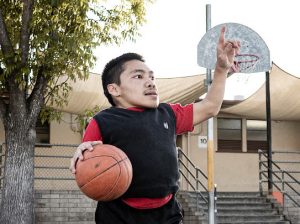
A collaborative software program developed by San Diego State professor Robert Briggs could make learning more efficient and engaging, studies suggest.
In the mid-‘90s, Briggs used an early version of the software with students at Orr Elementary School in Washington, D.C. He was look- ing for an answer to the question, “Why do I care?”
According to Briggs, many of the students at Orr Elementary were not worried about math problems or history. What concerned them were real-life, day-to-day problems.
Therefore, the students used Briggs’ software to develop a learning regimen.
“What I had to do was find some- thing that they cared about,” Briggs said.
As a result, Briggs discovered how to approach teaching students through cooperative study.
“They spent an hour online debating whether they should study history,” Briggs continued.
Through collaborative technology, Briggs learned what types of questions engaged students. He said he gave the students a stake in what they were learning by connecting subjects such as history and math to problems the students dealt with directly.
Compared to students from other classrooms, Briggs said his students experienced a higher retention rate after using the software.
However, Briggs says his soft- ware applies to more than elementary-aged school children; it’s been used for college students as well.
In April, the collaborative soft- ware was tested under the supervision of professor Gwendolyn Kolfschoten at Delft University of Technology in the Netherlands. A group of first-year business students used the software to analyze complex technological problemsand develop solutions regarding real estate management.
“They had to brainstorm solutions on how to organize, prioritize and plan real estate projects within the university,” Kolfschoten said.
Kolfschoten said many of the buildings on campus need maintenance.
Kolfschoten found the collaborative software efficient. She said stu- dents were able to quickly identify the problems and offer solutions while remaining engaged.
According to her, Kolfschoten said although the software can save a lot of time and money if used properly, there are still minor issues.
One of the software’s early challenges was its complexity as it required expert supervision to operate and was difficult to explain.
Kolfschoten and Briggs said the current version of the software is simpler, easier to use and “much more available and approachable.” The current obstacle, accord- ing to DePaul University professor Ruth Ter Bush, is to show teachers the value of the product.
“With teachers, it’s got to be dirt simple in a box, so that overcoming the cognitive effort to learn how to use the software is really low,” Ter Bush said.
Another issue Ter Bush identified was designing the software to be more attractive to the modern-day technology user.
“It’s always a challenge with software,” Ter Bush said. “When you’re developing software, you develop what you currently have and then technology moves on from you.”
Ter Bush will run a “stress test” of the program on students at DePaul University in Chicago this fall.
According to Briggs and Ter Bush, the software will undergo more studies and tests before it’s ready for commercial use.









